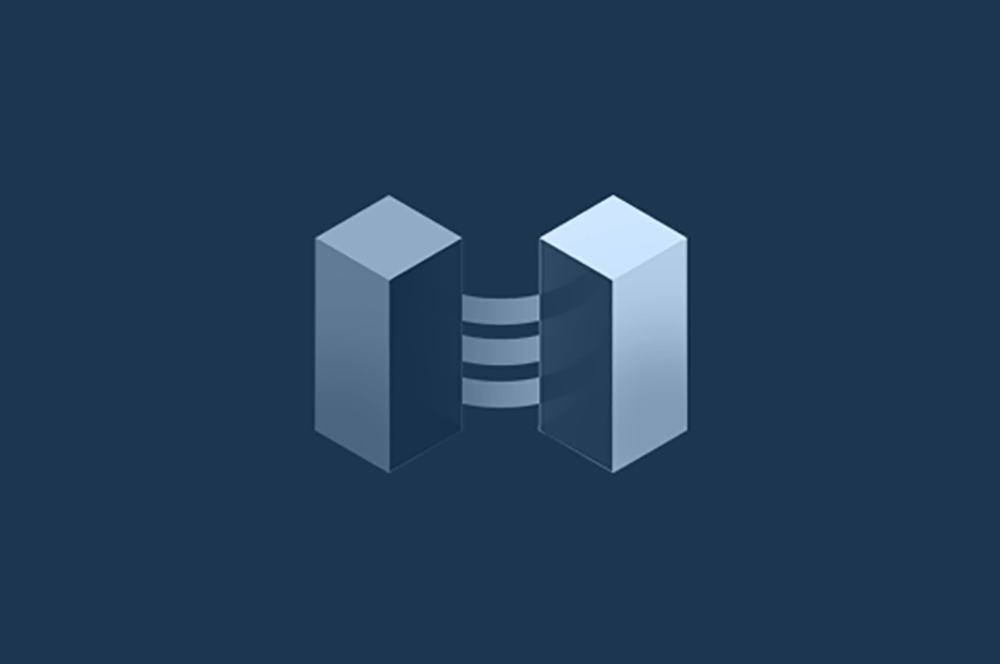Have you ever had trouble managing and controlling complex systems with constantly changing management tools? Some aspects of running a cloud-based organization can be extremely difficult. Managing new, complex environments with all of their moving parts is becoming increasingly complicated. Microsoft Azure Arc is a hybrid cloud game changer. It provides a management platform for multi-cloud and on-premises environments. In this article, we’ll go over Azure Arc in detail, how it works, and how it can help you.
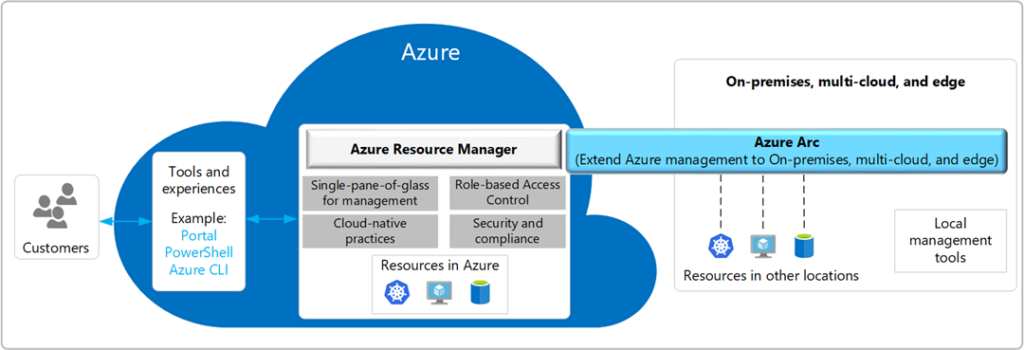
Get Ready To Experience The Exciting Journey Of What Is Azure Arc
Today, many businesses use cloud services, but there is still an ample number of businesses that cannot use cloud services for various reasons. Modern software is becoming increasingly complex, making managing your applications in your own data center a daunting task. This is where Azure Arc comes in to help you manage your on-premises or multi-cloud applications as well as your data on an integrated platform.
Now, we’ll dive into Azure Arc and demonstrate how it can help revitalize and manage on-premises applications and databases. Let’s have an overview of Azure Arc’s, features, benefits, and capabilities.
What Exactly Is Microsoft Azure Arc?
Azure Arc, as previously stated, is a multi-cloud and on-premises management platform that dynamically delivers high performance. It supports consolidating all of your data and systems into Azure Manager. Integrating inventory, management, governance, and security across all servers, as well as managing Kubernetes structures at scale, are some of the key features of Microsoft Azure Arc. It can also manage virtual machines and other resources as if they were hosted in Azure. Furthermore, it facilitates servers running anywhere, both on-premises and in the cloud. This can include Windows, Linux, and other operating systems. Continue reading to learn more about the advantages of these key features and others. It does so by providing the following features:
Use Azure services and management features such as Azure policies to manage your resources regardless of where they are deployed.
Manage any CNCF-certified Kubernetes cluster, virtual machines, and databases as if they were Azure-hosted.
Azure Arc is compatible with the following resources:
Any CNCF-certified Kubernetes cluster, Physical or virtual machines running either Windows or Linux, SQL Server 2012 R2 or higher, and Azure data services such as Azure SQL Managed Instance and PostgreSQL Hyperscale.
Azure Arc is a cloud bridge that allows you to display your on-premises (or another cloud) resources into Azure. Having all of your resources, whether on-premises or in another cloud, displayed in Azure allows you to gain centralized visibility of all of your resources while also assisting with regulatory compliance and data sovereignty because your data can remain in your data center while being managed through Azure.
The features provided are mostly used in hybrid scenarios. You can run your SQL server on-premises and use Azure Arc for additional security features such as providing security best practices via Azure Sentinel and Azure Defender. Furthermore, Azure Advisor can make recommendations for additional best practices. The ability to run Azure services anywhere allows you to modernize your applications and data center while maintaining complete control over your data. Because no other cloud provider offers an offering like Azure Arc, it’s not surprising that Microsoft is focused on expanding its capabilities.
This is a very high-level overview of the Azure Arc features. In the following sections, we’ll go over each offering in greater detail.
Services by Azure Arc
Azure Arc currently supports the following resources:
- Server
- Kubernetes Cluster
- Data Services
- Databases
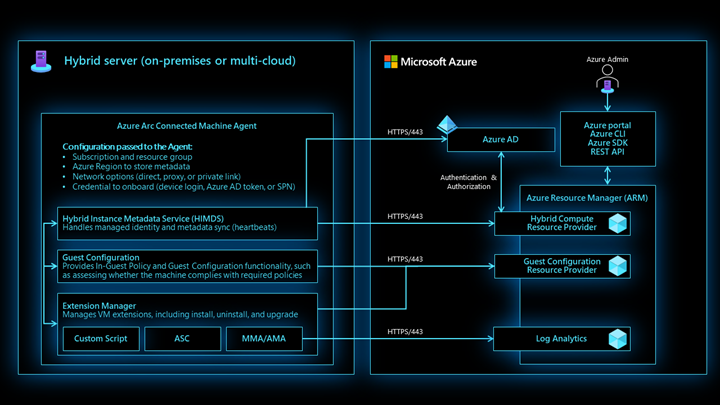
Servers That Support Azure Arc
Azure Arc for physical or virtual servers lets you manage and monitor these servers with Azure Monitor, Azure Policy, or Azure Automation. It also includes security features such as Azure Sentinel and Defender for Cloud. You must install an agent to enable Azure Arc on your servers. This agent sends Azure Arc regular heartbeat messages to ensure that it is still connected. It makes no difference where your servers are located. This can be done on-premises, with another cloud provider, or a combination of the two.
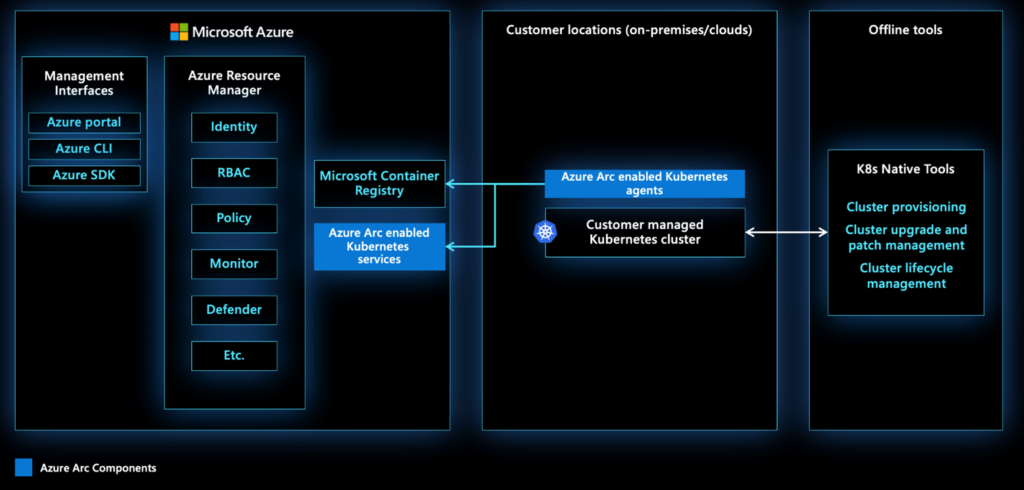
Azure Arc-Enabled Kubernetes
Azure Arc for Kubernetes installed its agent in your Kubernetes cluster’s azure-arc namespace. Installing the agent adds your K8s cluster to a resource group and allows you to tag it. The agent is compatible with any CNCF-certified Kubernetes cluster. In a subsequent post, I will demonstrate how to connect an on-premises k3s cluster to Azure Arc.
When you connect your K8s cluster to Azure Arc, you can manage it from the Azure portal. There is a summary of all modules, workloads, and services (it is the same view as if you were using an AKS cluster). You can also use Application Insights to create alerts and Container Insights to monitor your containers.
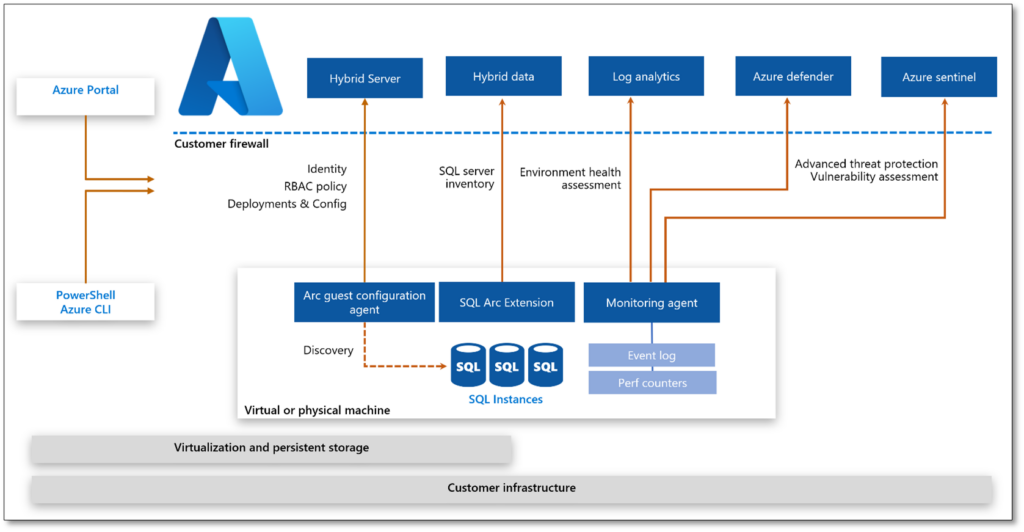
SQL Server On Arc-Enabled Azure Servers
The Azure Arc agent can be installed on SQL Server, which can be either physical or virtual, and run Windows or Linux. Azure Arc for SQL, like the other Arc offerings, allows you to use advanced logging and security features of Azure such as Log Analytics, Azure Security Center, and Azure Sentinel.
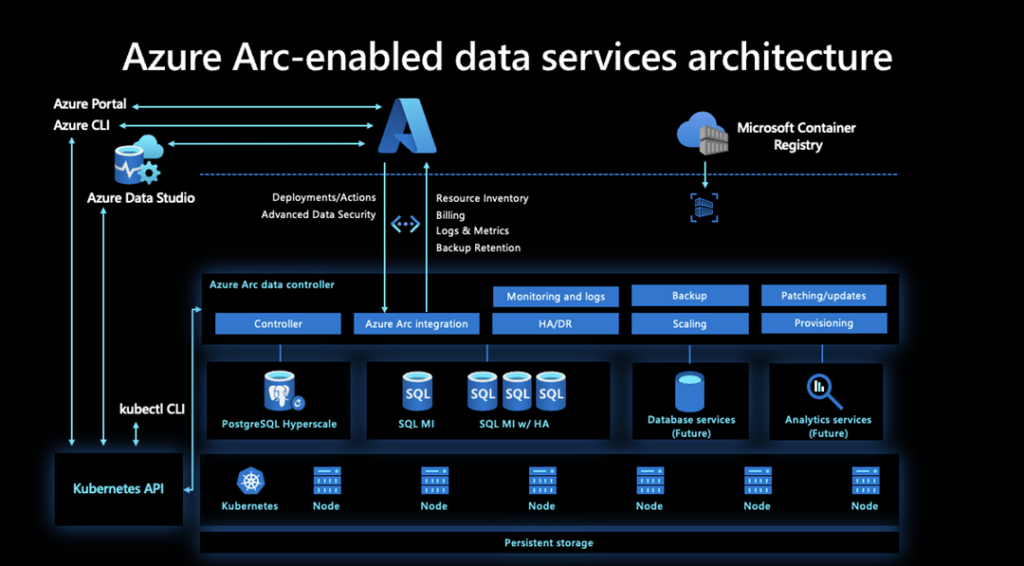
Azure Arc-Enabled Data Services
With this, you can implement and run Azure services outside of Azure while still managing it from Azure. It assists you in managing your SQL-controlled instances and PostgreSQL Hyperscale services by offering policies and regular updates via the Microsoft Container Registry. You can also have cloud-like flexibility on your on-premises databases and extent them dynamically with a cloud billing model.
Microsoft Azure Arc’s Benefits, Demystified!
One of the most significant advantages of using Azure Arc is that all resources connected with it send data to the main, cloud-based Azure Manager. This condenses the information into a concise and useful format. Enterprises can ensure the compliance of Azure Arc-registered resources regardless of where they are deployed. This results in faster problem-solving and less downtime.
Microsoft Azure Arc can also be used to manage maintenance operations ranging from the most basic to the most complex across all cloud types. For example, it can aid in the management of security and governance, as well as the tedious task of updating the operating systems on your servers.
Customers benefit from all of the aforementioned Azure key features. They can manage resources both inside and outside of Azure using a single consolidated control plane.
You can check out our robust solutions by Al Rafay Consulting, built with the power of Microsoft Azure including, Event Calendar Software, Event Management, and much more.


